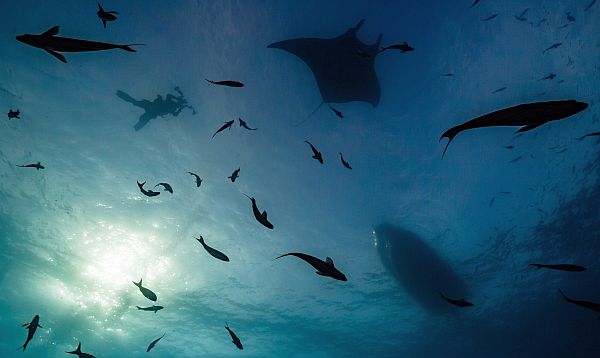The Mexican government last week announced the creation of a new marine reserve in the Pacific Ocean, the largest protected area of its kind in North America.
Alejandro Del Mazo Maza, representing Mexico's National Commission of Protected Natural Areas, announced the massive expansion of the Revillagigedo marine park on Thursday, October 5 at the Our Ocean conference in Malta.
The park covers more than 57,000 square miles, a vast rectangle of ocean encompassing the four Revillagigedo Islands, small volcanic land masses under Mexico's control that lie about 240 miles southwest of Baja California.
The islands are uninhabited except for a small Mexican naval presence and were named a World Heritage Site in 2016 for their unique biodiversity (the reserve is also the location for the photo that won the National Geographic Traveler Photo Contest in 2015.)
"With the goal of guaranteeing maximum protection of this World Heritage Site, our national legislation's strongest conservation category will be used, and all forms of fishing will be prohibited," Del Mazo said in a statement. He also said that Mexico will not permit the construction of hotel facilities on the islands.
Previously, the islands had been protected by a small reserve that included only the waters up to six miles off the land. That left important feeding and migration areas for sharks, rays, whales, and other species in the path of fishermen - who either target the species, often illegally, or catch them accidentally as bycatch.
But the new park is designed to protect critical habitat for those animals, as well as corals and other fish. No fishing, mining, or other intensive resource development will be allowed in the newly expanded marine reserve.
Read the full article at NationalGeographic.com.


